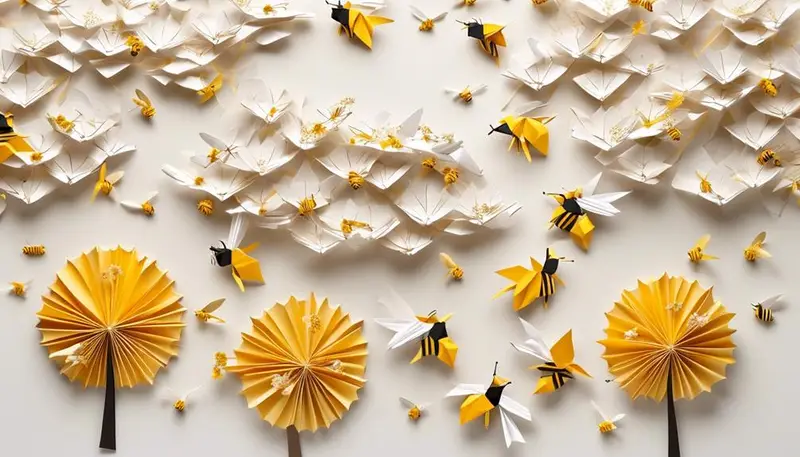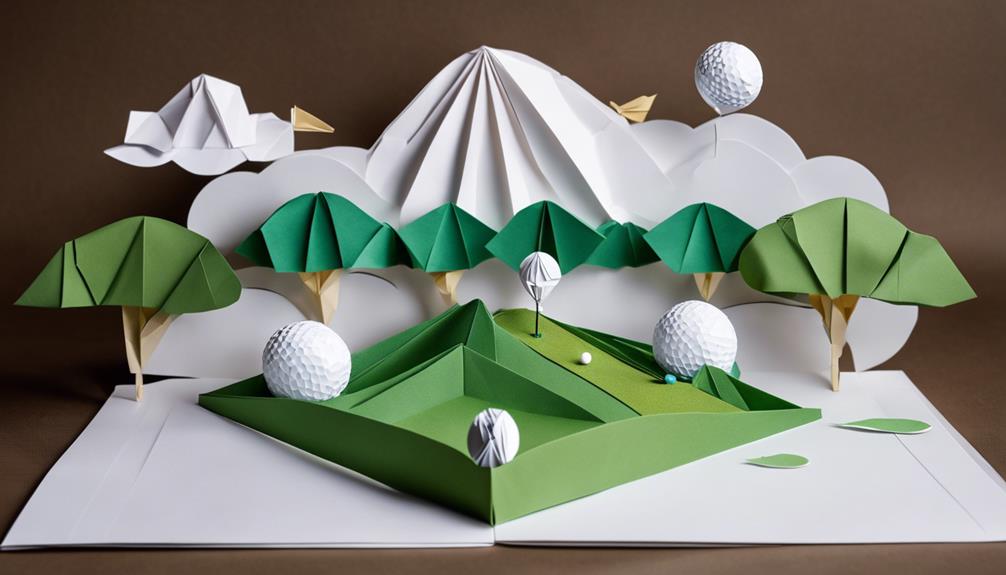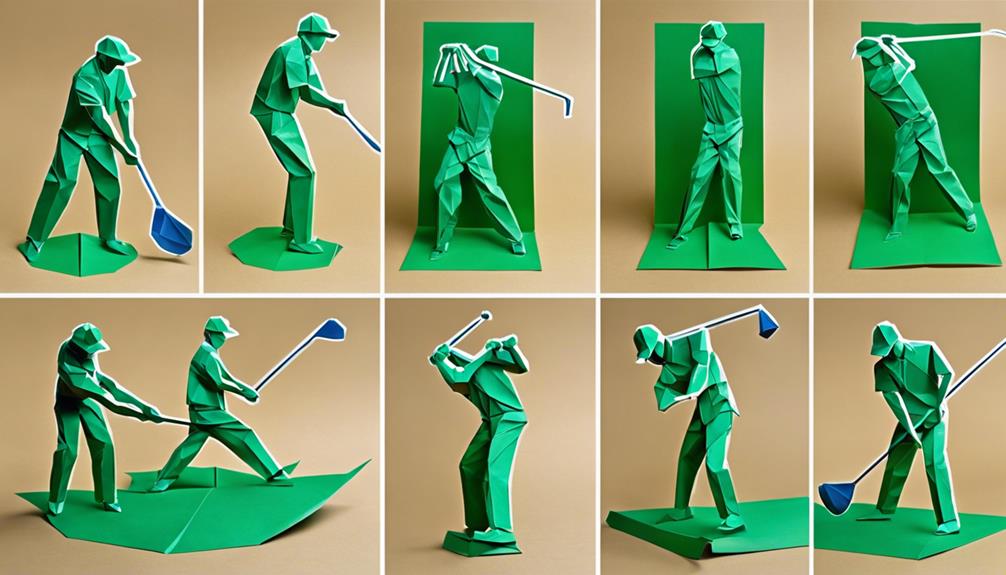Yellow golf balls offer high visibility in various conditions, aiding in tracking the ball's path and quick location identification. The unique color stands out, reducing the risk of losing or mistaking the ball. They bring a touch of style and personality to your game, along with enhanced photography opportunities. However, there may be challenges such as potential loss of distance and difficulty tracking spin compared to traditional white balls. Understanding these pros and cons can help you decide if yellow golf balls are the right choice for your next game.
Takeaways
- High visibility in low light or among trees, aiding in quick location identification on the course.
- Unique color reduces chances of losing or mistaking the ball, adding style and personality to gameplay.
- Enhanced visibility aids in tracking the ball's path and spin, improving depth perception and shot judgment.
- Yellow balls create less glare under sunlight, helping maintain focus but may cause distractions at specific angles.
- Stand out on the green, easier to spot in low light, but potential loss of distance and difficulty tracking spin.
Improved Visibility on the Green
Enhancing visibility during gameplay, yellow golf balls offer a distinct advantage on the green due to their vibrant color. In a sport where precision is key, being able to easily spot your ball can greatly improve performance. The bright yellow hue stands out against the green grass, making it simpler to track the ball's trajectory and locate it after a shot. This visibility advantage is particularly beneficial in low-light conditions, such as early mornings or late afternoons, and in areas with dense foliage or rough terrain.
Moreover, the enhanced visibility of yellow golf balls can speed up gameplay by reducing the time spent searching for lost balls. This not only benefits the player but also contributes to a smoother pace for the entire group.
Additionally, for individuals with visual impairments or color blindness, yellow golf balls can provide a more accessible and enjoyable playing experience. Overall, the improved visibility offered by yellow golf balls can lead to more accurate shots, quicker gameplay, and a better overall experience on the green.
Potential Loss of Distance
When pondering the use of yellow golf balls, golfers must weigh the potential loss of distance that may result from opting for a colored ball.
Analyzing the impact on distance, trade-offs in visibility, and performance in various conditions are critical factors to contemplate.
Understanding how these elements interplay can help players make informed decisions about using yellow golf balls on the course.
Distance Impact Analysis
Analyzing the potential importance of considering the loss of distance associated with using yellow golf balls is essential for golfers seeking to optimize their performance on the course.
When comparing yellow golf balls to traditional white ones, some players have reported a slight decrease in distance. This difference can be attributed to the pigmentation of the yellow dye, which may affect the visibility of the ball's spin and trajectory, potentially leading to suboptimal shot execution.
Additionally, the manufacturing process of yellow golf balls may differ slightly from white ones, impacting factors such as compression and core construction, which can influence the overall distance the ball travels.
However, it is vital to note that advancements in golf ball technology have greatly minimized any distance loss associated with yellow golf balls. Manufacturers have developed innovative designs and materials that enhance the performance of yellow balls, ensuring that they can compete with their white counterparts in terms of distance and overall playability.
Ultimately, while there may be a marginal distance impact with yellow golf balls, the difference is minimal in modern golf ball offerings.
Visibility Trade-Offs
Given the potential trade-offs in visibility with yellow golf balls, it is important for golfers to assess how any compromise in distance may impact their overall performance on the course.
While the high visibility of yellow golf balls can aid in tracking the ball in various light conditions, there are some visibility trade-offs that could potentially lead to a loss of distance.
Here are some considerations golfers should keep in mind:
- Less distance perception: Yellow balls might be harder to track in the air, making it challenging to gauge the distance the ball has traveled.
- Potential loss of focus: Bright colors can sometimes be distracting, potentially affecting a golfer's focus on the swing and ball contact.
- Difficulty in low-light conditions: Yellow balls may not stand out as well in dim lighting, leading to visibility issues during early morning or late afternoon rounds.
- Contrast against surroundings: Depending on the course's color scheme, yellow balls may blend in with certain backgrounds, affecting visibility.
- Impact on depth perception: The color yellow may alter how depth is perceived, potentially affecting shot accuracy.
Performance in Conditions
Given the potential impact on distance due to visibility trade-offs associated with yellow golf balls, golfers should be mindful of how these conditions may affect their overall performance on the course. Considering the bright yellow color of the golf balls, which can enhance visibility in certain lighting conditions like overcast skies or when playing at dusk, there is a trade-off that needs to be taken into account.
The increased visibility that yellow golf balls provide may also pose a challenge for some golfers in tracking the ball's flight path compared to traditional white golf balls. This potential loss of visibility can result in misjudging distance and direction, ultimately affecting a golfer's performance.
In scenarios where distance plays a crucial role, such as attempting to carry a hazard or reach the green on a long par 5, the reduced visibility of a yellow golf ball may lead to shots falling short. Golfers who prioritize maximum distance and accuracy might discover that the trade-off in visibility with yellow golf balls has a negative impact on their performance, especially in situations where precision is critical.
Therefore, when opting to use yellow golf balls, golfers should evaluate the effect on distance and determine whether the benefits of visibility outweigh the potential loss of distance.
Easier to Spot in Low Light
Enhancing visibility during dusk or dawn, yellow golf balls offer a distinct advantage over traditional white balls in low-light conditions. The vibrant hue of yellow stands out against the dimming light, making it easier for golfers to track their shots and locate their balls in challenging lighting situations.
Here are five reasons why yellow golf balls are easier to spot in low light:
- High Visibility: Yellow is a high-contrast color that stands out against most backgrounds, enhancing visibility even as natural light decreases.
- Reduced Eye Strain: The bright yellow color of the ball reduces eye strain for players, allowing them to focus better on their shots.
- Quick Identification: The distinctive color of yellow golf balls makes them easy to identify from a distance, aiding in quick ball retrieval.
- Enhanced Depth Perception: Yellow balls can help with depth perception in low-light conditions, allowing players to gauge distances more accurately.
- Improved Tracking: The bright color of yellow balls makes it easier to track the ball's trajectory, especially during early morning or late evening rounds.
Difficulty Tracking Spin
Tracking the spin of yellow golf balls in low light can present a challenge for golfers due to the color's reflective properties. Spin is an essential element in golf, influencing the ball's trajectory, distance, and control.
When using yellow golf balls in dim lighting conditions, such as early mornings or late afternoons, it can be harder to observe the spin compared to traditional white balls. The bright yellow hue, while aiding visibility in various lighting situations, can make it tricky to discern the intricate movements of the ball as it spins mid-air or on the green.
Due to the color's reflective nature, especially under artificial lighting or cloudy skies, accurately tracking the spin of a yellow golf ball becomes more demanding. This can potentially affect a golfer's ability to make precise shots and adjustments based on the spin rate.
To counter this challenge, golfers using yellow balls may need to rely more on other visual cues or feel to gauge the spin, especially when lighting conditions are suboptimal.
Stand Out From Traditional White Balls
Standing out from traditional white balls, yellow golf balls offer a vibrant and distinctive appearance on the course. The bright hue of yellow stands out against the green grass, making it easier for golfers to spot their ball and track its trajectory.
Here are five reasons why yellow golf balls can help you stand out on the course:
- Visibility: Yellow balls are highly visible, especially in low-light conditions or when surrounded by trees.
- Distinctiveness: The unique color sets your ball apart from others, reducing the chances of losing it or mistaking it for someone else's.
- Style: Yellow golf balls add a touch of personality and style to your game, showcasing your individuality on the course.
- Photography: The bright color of yellow balls makes them easier to capture in photos or videos, enhancing your golfing memories.
- Fun Factor: Playing with a non-traditional colored ball can inject a sense of fun and excitement into your game, making it more enjoyable.
Impact on Ball Flight Trajectory
When considering the impact of yellow golf balls on ball flight trajectory, two important points come to mind.
To start with, the enhanced visibility of yellow balls can aid in tracking the ball's path, especially in challenging lighting conditions or against backgrounds where white balls may blend in.
Additionally, the reflection effects of sunlight off yellow balls may also influence the perception of ball flight, potentially affecting player strategy and shot execution.
Visibility for Tracking
Improving visibility on the golf course, especially in changing weather conditions, is an important factor that can greatly influence the trajectory of the ball's flight when using yellow golf balls. The enhanced visibility provided by yellow golf balls can aid golfers in tracking their shots more effectively, resulting in better overall performance.
Here are five key points regarding the visibility for tracking when using yellow golf balls:
- Enhanced Contrast: The bright yellow color of the ball creates a strong contrast against different backgrounds, making it easier to spot during the entire flight.
- Quick Location Identification: The vibrant hue of yellow allows golfers to quickly identify the ball's location on the fairway or rough, saving time during the game.
- Visibility in Low Light: Yellow balls are easier to see in low light conditions, such as early morning or late afternoon, ensuring better tracking throughout the round.
- Improved Depth Perception: The high visibility of yellow balls helps in judging the height and depth of the shot more accurately.
- Easier to Follow Spin: Yellow balls make it easier to observe the spin of the ball in the air, aiding golfers in evaluating the shot quality and making adjustments accordingly.
Sunlight Reflection Effects
The sunlight reflection effects on yellow golf balls can greatly influence the trajectory of the ball's flight during gameplay. The vibrant hue of yellow golf balls absorbs and reflects sunlight differently compared to traditional white golf balls. When hit, yellow golf balls tend to create less glare under bright sunlight conditions, allowing players to easily track the ball in the air. This reduced glare can help golfers maintain focus on the ball's flight path, leading to more accurate shots and improved overall performance.
However, the sunlight reflection effects on yellow golf balls can also have drawbacks. In certain lighting conditions, such as during sunset or sunrise, the reflective nature of yellow golf balls may cause distractions or make it challenging for players to judge the ball's position accurately. Additionally, if the sunlight hits the yellow ball at a certain angle, it can create a blinding effect, potentially affecting the player's ability to see the ball clearly during its trajectory.
Frequently Asked Questions
Do Yellow Golf Balls Affect Performance in Wet Conditions?
When evaluating the impact of yellow golf balls on performance in wet conditions, it is essential to take into account factors such as visibility, ball flight, and overall playability. Conducting thorough tests can provide valuable insights for golfers.
Are Yellow Golf Balls More Prone to Getting Dirty?
Yellow golf balls, due to their vibrant hue, may show dirt more visibly compared to white ones. Factors like grass stains and mud can be more apparent on yellow surfaces, requiring regular cleaning to maintain their visibility on the golf course.
Can Yellow Golf Balls Be Easily Customized for Identification?
Yellow golf balls can be easily customized for identification by adding logos, numbers, or initials. This personalization helps golfers quickly recognize their balls on the course, reducing the risk of confusion or loss during play.
How Do Yellow Golf Balls Impact Depth Perception on the Green?
Yellow golf balls can impact depth perception on the green due to their color contrast against the grass. The brightness of yellow balls may make it easier for some golfers to judge distances accurately, enhancing their putting performance.
Are There Any Rules or Restrictions on Using Yellow Golf Balls in Tournaments?
In tournament play, the rules regarding golf balls typically mandate that they conform to specific standards of size, weight, and composition. While some tournaments may allow the use of colored golf balls, restrictions may apply.
Conclusion
To sum up, yellow golf balls provide enhanced visibility on the green and are easier to spot in low light conditions. However, they may lead to a potential loss of distance and challenges in tracking spin.
Yellow golf balls also enable players to stand out from traditional white balls but could affect ball flight trajectory.
Ultimately, the choice to use yellow golf balls depends on personal preference and individual playing style.









